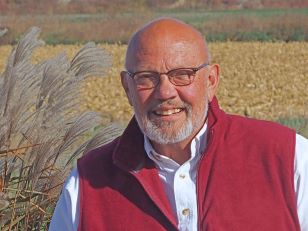
It was Ian Frazier’s Great Plains that taught me something about the Ghost Dance. I’d never heard of it before; but then, most white Americans haven’t. Stories of slavery are well-known to most, but the stories of Native America somehow escape most palefaces like me. If they’re known at all, they’re remembered because Buffalo Bill told them, or John Wayne.
In Great Plains, Frazier tells stories about the Plains Indians, who were, by and large, a fierce bunch, maybe the quintessential Native American—feathered headdress, breechcloth, body paint, spear and shield and bow and arrow, all of that regalia on a chiseled male mounted on a paint pony.
Frazier nearly deifies Crazy Horse, as many do. Crazy Horse, a Lakota hero at Little Big Horn, was the battle leader who simply would not simply float away in the massive flood of white folks who, time after time, found all kinds of crooked ways to put the Lakota (Sioux) people off their traditional lands. Frazier’s miscellany of 19th century Native American life includes a description of what he calls the first truly American religion, the Ghost Dance.
The sources of this strange, Indian Great Awakening are multiple—a little Protestantism, a little Mormonism, a little Catholicism, all grafted to spiritual roots that are soundly Native in character.
The Ghost Dance swept most tribes in the American west. It was worship that took the form of a ritual dance created to summon the old world back, the ancestors and the buffalo and the traditional way of life that had just about disappeared by 1890. It was a vision of heaven to a starving, beaten people, robbed of heritage and character. The Ghost Dance offered a vision of what they wanted so badly to see in the middle of the annihilation that was going on around them.
Out here—or a couple hours west—the Lakota variation on the Ghost Dance included the belief that wearing a ghost shirt or dress meant the wearer could not be harmed by a white man’s bullets. That belief, Frazier and others claim, scared white people badly and played a significant role in what happened 124 years ago this week on a broad and open expanse of indistinguishable prairie along a creek whose name is Wounded Knee. The Ghost Dance, you might say, is how I came to Wounded Knee.
What started in 1862 with the Dakota War in Minnesota ended on December 29, 1890, when the largest military encampment in America since the Civil War got into a fight with 50 or so of Big Foot’s Lakota braves. Big Foot himself was suffering with pneumonia after leading his people on an unthinkably long walk from the very top of what is now South Dakota, to the bottom—and in late December, remember. Yesterday, in 1890, marked the end of the Great Sioux Wars.
What exactly happened to begin what became a massacre is still in dispute, but the outcome is not. Sparks of anger flew aplenty, and one of them ignited conflagration. The Seventh Calvary (itself decimated at Little Big Horn and, some claim, still aching for revenge) and others in that huge cavalry encampment simply gunned down Big Foot’s band—men, women, and children—often in cold blood.
No one really knows how many Lakota died. Estimates range as high as 300. But what happened at Wounded Knee on December 29, 1890, ended something. To say what happened out there in the middle of winter is a blot on American history is obscene understatement. What happened out there was evil, as all massacres are.
One of the dreams I’ve had for years is some kind of worship service on December 28 or 29, dates that mark two horrific massacres—King Herod’s slaughter of the innocents after Jesus’s birth, and the Wounded Knee Massacre. Those two events are not analogous, but in both cases those who wielded great power simply butchered innocent human beings
This morning, 124 years ago, a snowstorm was abating, a snowstorm that had shrouded the frozen bodies over the open fields and through the ditches, hundreds of them. They would lie there for some time before locals picked them up and buried them in a mass grave.
Wounded Knee, on the Pine Ridge Reservation in South Dakota, is in pure fly-over country, well off the beaten path, and a long ways from most anything that would attract a tourist. If you want to go there, you have to want to go there.
And really, who would?–what white guy, at least? It’s an awful story. This morning, if we were there now, all that death would be covered with snow. It really is an awful story.
Maybe that’s why what happened there 124 years ago is so invisible to millions of white Americans. Maybe so.
And maybe not. Maybe some would rather not know, not remember.
Maybe so. Maybe it’s because what happened at Wounded Knee just happens to come up between the holidays. It just doesn’t go well with “Seasons Greetings.”
Here’s the story: six or seven hours west of here on December 29, 1890, 300 or more Lakota people were massacred.
That’s what happened, a story none of us should forget.

